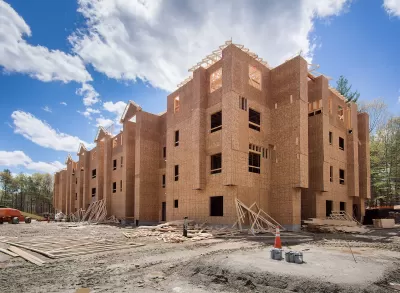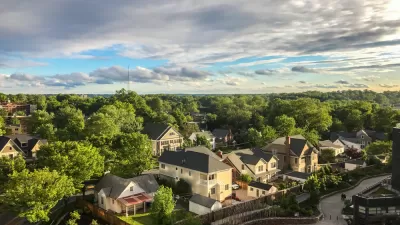A combination of ineffective funding mechanisms, strict building regulations, and inflation are pushing per-unit construction costs higher.

Writing in Crain’s Chicago Business, Judith Crown explains the various factors behind the high cost of affordable housing construction.
According to Crown, “Costs are driven by the byzantine rules of the federal tax credit system that require builders to assemble a ‘capital stack’ of funders, each with sets of fees and requirements. On top of that comes ever more rigorous government standards for accessibility, sustainability and design.”
Additionally, federal resources dedicated to affordable housing have not kept up with inflation, and the complex tax credit funding system comes with “incredibly high transaction costs.” Some experts say it would cost far less if the federal government directly subsidized affordable housing construction.
Per-unit costs sometimes increase due to the addition of new infrastructure, but improvements such as new sidewalks can help make a housing development a vehicle for broader revitalization in the surrounding neighborhood. Modern affordable housing is also designed to blend in. “Planners want to get away from the institutional design of infamous public housing projects, such as the Robert Taylor Homes and Cabrini-Green. While these 1960s-era buildings aren't directly comparable to today's scaled-down affordable projects, there's a priority to design buildings that look like they're part of the neighborhood, architects say.”
FULL STORY: The high cost of creating affordable housing

Florida Considers Legalizing ADUs
Current state law allows — but doesn’t require — cities to permit accessory dwelling units in single-family residential neighborhoods.

Manufactured Crisis: Losing the Nation’s Largest Source of Unsubsidized Affordable Housing
Manufactured housing communities have long been an affordable housing option for millions of people living in the U.S., but that affordability is disappearing rapidly. How did we get here?

Americans May Be Stuck — But Why?
Americans are moving a lot less than they once did, and that is a problem. While Yoni Applebaum, in his highly-publicized article Stuck, gets the reasons badly wrong, it's still important to ask: why are we moving so much less than before?

EV Chargers Now Outnumber Gas Pumps by Nearly 50% in California
Fast chargers still lag behind amidst rapid growth.

Affordable Housing Renovations Halt Mid-Air Amidst DOGE Clawbacks
HUD may rescind over a billion dollars earmarked for green building upgrades.

Has Anyone at USDOT Read Donald Shoup?
USDOT employees, who are required to go back to the office, will receive free parking at the agency’s D.C. offices — flying in the face of a growing research body that calls for pricing parking at its real value.
Urban Design for Planners 1: Software Tools
This six-course series explores essential urban design concepts using open source software and equips planners with the tools they need to participate fully in the urban design process.
Planning for Universal Design
Learn the tools for implementing Universal Design in planning regulations.
City of Moreno Valley
Institute for Housing and Urban Development Studies (IHS)
City of Grandview
Harvard GSD Executive Education
NYU Wagner Graduate School of Public Service
City of Cambridge, Maryland
Newport County Development Council: Connect Greater Newport




























